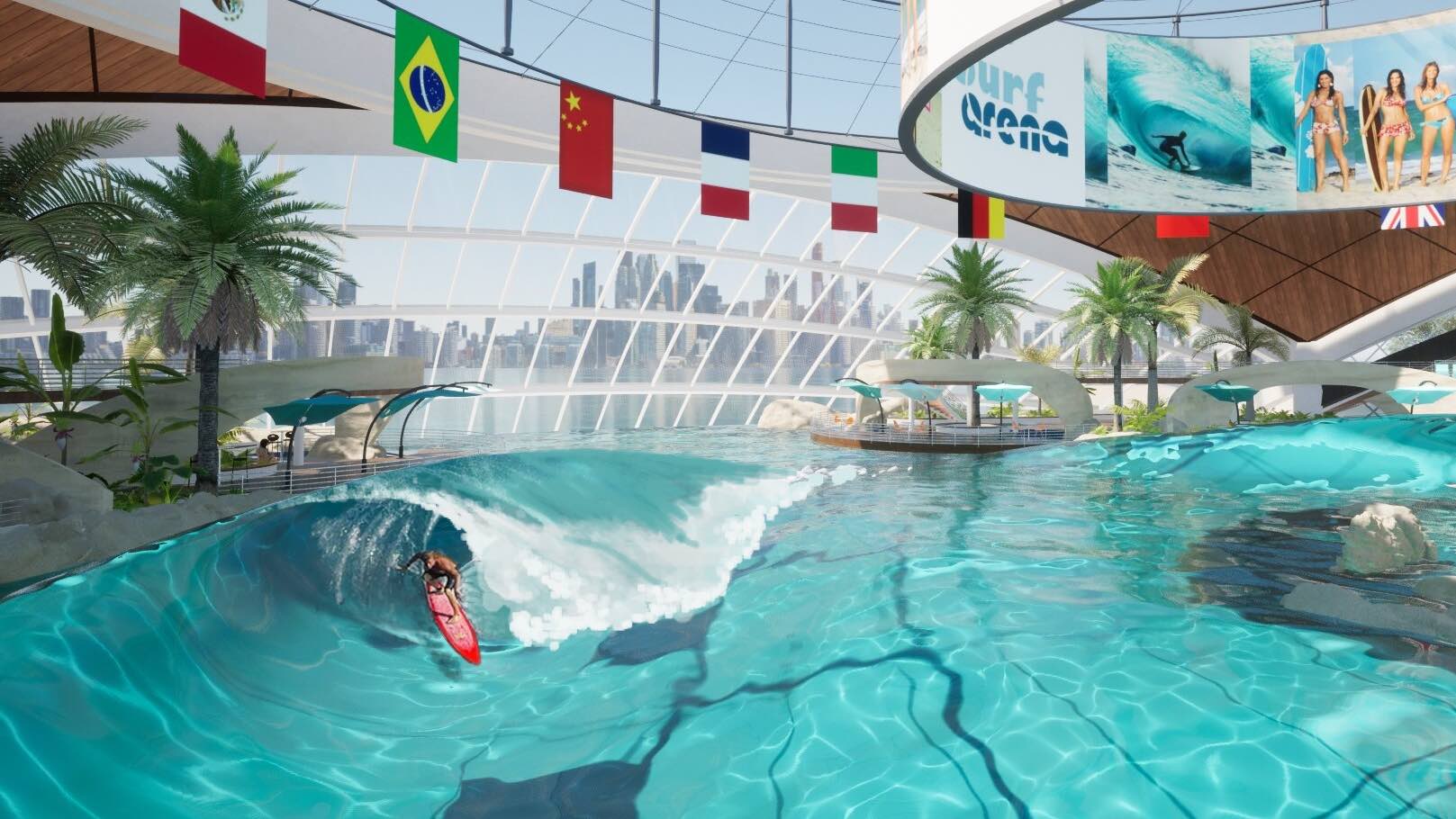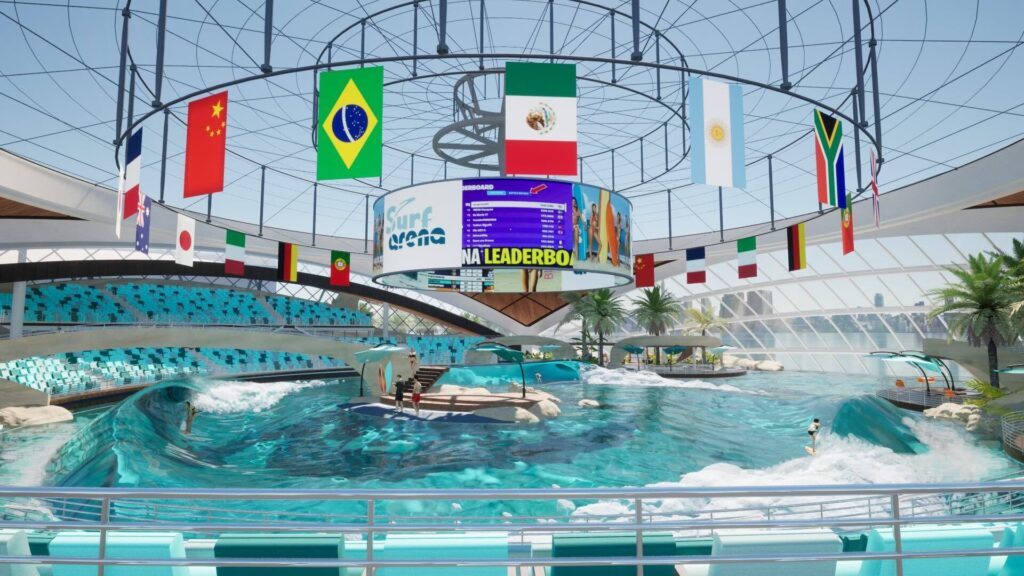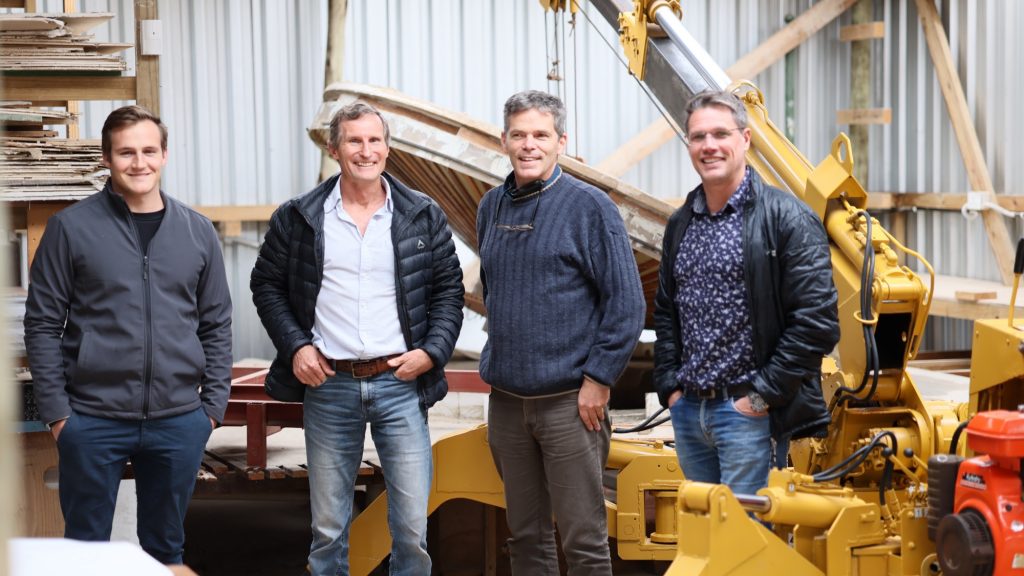The never-ending circular wave pool dream is about to become a reality

Fascinated by the potential for a never-ending ride in a circular wave pool, we originally posted a profile on the Surfring project a while back. It was a heavily trafficked until Surfring did a U-Turn and requested a return to anonymity. “Until launch we need to keep below the radar as we get through the current mvp phase. I’d like to offer that we reveal to you first any new info as it comes available, in exchange for you temporarily taking down our video and article. We need to go dark for a while, perhaps even taking down our website temporarily.”
Surfring went silent for nearly two years until late in 2023 when they reached out to writer Neil Armstrong. This following feature is Surfring keeping their promise to provide “new info as it has become available.”
Octogenarians want the fountain of youth; gluttons search for the ever-expanding, unlimited buffet, and surfers seek an endless wave. Literally. A ride so long that the only acceptable ending is your legs collapsing under you in blissful exhaustion. And a round wave pool may offer that elixir of stoke – surfing’s Holy Grail.
A circular wave pool can be done on a fraction of the land size required compared to most wave pools, costing a small portion of the price. So why hasn’t a circular wave design morphed into reality?
There have been plenty of contenders over the years. We’ve previously covered the history of the circular wave pool design, but here’s the abridged version.
Kelly Slater Wave Company, WaveLoch/SurfLoch (Tom Lochtefeld), and Perfect Swell all touted circular wave pools around the time of their inceptions. All three have since deleted versions from their websites and media.
Greg Webber’s design has an oval-shaped track or moat. Motorized carriages create waves with an attached hull. It plans to use two types of water displacement: one to create waves and the other to make currents. We’ve yet to see a working model.
Okahina’s is a floating atoll made for existing bodies of water, which pushes out waves from its central hub. It’s touted to produce a wave every 15 seconds and offer 30-second rides. A full-sized version was due to launch in late 2020, but nothing has transpired.

Recently, another company has arrived on the circular scene. SurfRing, the name is as simple as the concept is alluring. But some serious technical hurdles lurk beneath the surface of something so seemingly straightforward. The main one is current mitigation. Or in non-engineering speak – how to overcome the problem of current and wake from the previous wave negatively affecting a following wave – potentially having too much wash and stirring the trough and face of the next peeling gem. Turbulence and currents are hard enough to manage in regular wave pools, but the effects are magnified in circular pools.
“Until now, we have not scaled nor looked for funding. We chose to go dark for a time while we finalized global patenting and to confirm as much of our engineering principles as possible,” said Peter, “What we present today is an idea with secure IP with the confidence of understanding the sweet spots and best iterations of our design.”
Peter readily admits that South African based SurfRing is a very early-stage tech start-up seeking to collaborate with established wave pool companies and is keen to raise seed capital for more advanced R&D and prototypes.
As to why Peter thinks there are currently no commercial circular wave pools in existence, he points out that all the circular donut-shaped wave pool ideas he’s seen are based on propagating waves. He believes perfecting waves in large rectangular pools is hard enough, but turbulence and current are amplified in circular pools. “Current mitigation is based on the head-flow water discharge being slightly counter-rotating, which cancels out the stirring effect,” he said.

We chatted with Peter Calitz, SurfRing’s Founder, inventor, and CEO, who breaks down the entire system and the company’s future goals and outlines the seemingly boundless possibilities – and scalability – of SurfRing’s design. He’s been quietly researching for years and has recently secured intellectual property (IP) rights for various aspects of his design.
Surf Ring’s wave-making system is based on the convergence of deep-water sheet-flow with an intersecting ‘wave-forming mound’ (snow plough), which derives its movement from the carousel. This wave-forming mound snow-ploughs into the oncoming water sheet-flow. “Tom Lochtefeld might call it a traveling reef. The pilot project will have several large axial-flow pumps, like the (rapid wave pools) Unit citywave, and Surf Stream,” said Peter.
The water flow rate is paramount to circular wave pools. “Typical ‘sheet-flow’ waves require a decent flow rate, perhaps about 10M/sec, to achieve a reasonable wave height. Our waves are very different, more like ocean waves, where water, having only a relatively low flow-rate, is lifted almost vertically by energy from below,” said Peter. “Similar to flipping an omelette, where the traveling wave mound (spatula) gets in underneath the water (egg), lifting it up before it can slide off the wrong way,” he continues, “in this way, we can form large surfing waves without too much fuss. And perhaps in the near future with larger carousels, large heavy walls of water, which no one has imagined possible in a wave pool environment.”
As to how large of a unit, wave, and how long of a ride for Surf Ring, Peter’s confident a 16-meter carousel (which sits in a 30-meter pool) will generate waves up to 4ft (1.2m) and then anything longer up to 20 seconds for small waves (1m). It will have one or two simultaneous waves, it can fit on the deck of a mega cruise ship, or it could take the place of your tennis court. However, the peel speed of a 6ft wave is too fast for the small 16-meter diameter, he reckons.
Peter admits that his life goal is to build one larger than 100 meters in diameter, which could create 10ft waves unprecedented wave size larger than 10ft and have no less than seven wave formers distributed around its circumference of 310 meters. He would divide its inner island ‘coastline’ into 3 ‘beaches’ of a 3-pointed star island shape, and at its 3 points, have the waves die off, then quickly rebuild for the next beach section. In this way, each wave former rises and falls three times per rotation, creating three rides (each) per rotation, translating into, and up to 1470 wave rides per hour lasting longer than a minute each, peeling at 5 meters per second, which equals really big waves. “Imagine what we could do with a 300-meter carousel! The sky’s the limit,” he added.
As for energy consumption, Peter makes the point that traveling standing tech uses less energy than standing waves as it pumps water at a much lower flow velocity due to the wave profile’s rate moving against it, making up the difference.
“I must emphasize that the design brief I set for myself many years ago was to create a system for wave pool surfing that reduces the cost 10-fold while producing waves that are much more ‘gnarly’ and much more desirable, not to compete with regular ocean surfing, but to compete with iconic ocean surfing. Note that, like Teahupo’o in Tahiti, the effective wave height in the SurfRing is greatly extended by its deep trough. So a 6ft wave has its crest only 3-4ft above pool water level, which is an important factor making our system very energy efficient,” he said.
Peter and his team have continuously tested scale models, as all sound engineers and scientists do. “We are a wave pool technology company, not a wave pool project. We put the idea of building a wave pool in Jeffrey’s Bay on hold as the business case is not optimal at that location. Our pilot project will be built wherever and whenever we find the right partner,” he adds. Peter regards Surf Ring’s success as securing Intellectual property rights of their tech. Or, as he puts it, “our secure IP is the dry powder for the explosion of wave pool developments and surfing globally. Those who invest in us will see an insanely large return. A key current strategy is to make our tech available to an established wave pool brand.”
So, as to who by and where a full-scale version will be built is anyone’s guess. Tech bros and investment consortiums, please form an orderly, circular queue.
Related Coverage
